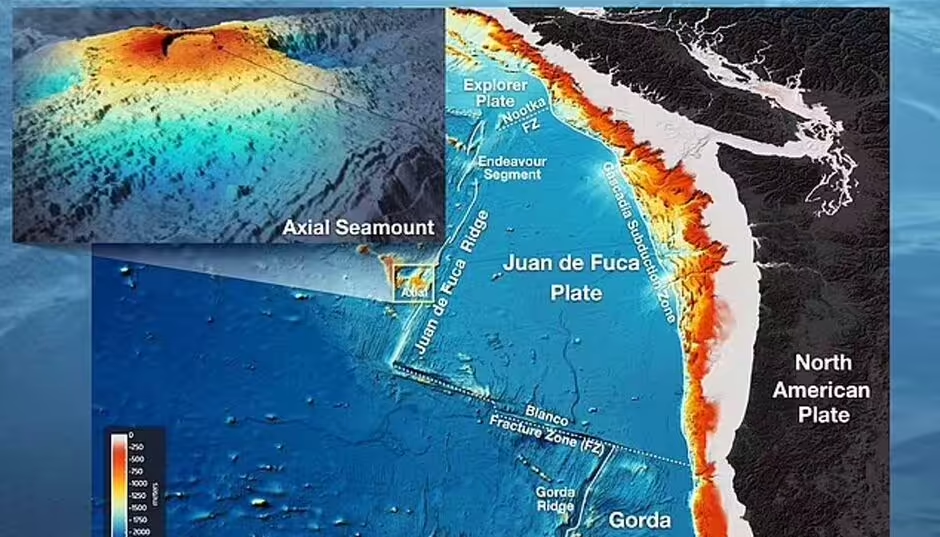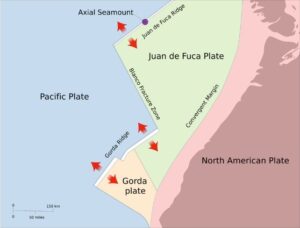
USGS is monitoring a massive volcano located off the U.S. West Coast that they say can erupt at anytime. Known as the Axial Seamount, the under-water volcano is located about 300 miles off the coast of Washington. In recent months, scientists have seen the seamount dramatically increase in size and bulge, indicating that it is likely going to erupt soon. And while a significant eruption is likely, because of it’s location deep underwater, there are likely to be limited impacts, if any, to the U.S. West Coast. Beyond USGS, volcanologists and scientists around the U.S. are studying the volcano.
“Axial is the most active volcano in the Northeast Pacific which maybe some people don’t know, because it’s hidden under the ocean,” volcanologist Bill Chadwick told Jenn Chávezin in the Oregon Public Broadcasting podcast. Chadwick is a volcanologist with Oregon State University and has been documenting the changing shape and activity of the Axial Seamount for their College of Earth, Ocean, and Atmospheric Sciences.

Chadwick described the process the volcano evolves from periods of eruption to non-eruption back to eruption. “So, if it’s not erupting, it’s inflating and getting ready for the next one. And so that’s why we’re kind of monitoring what’s happening to it all the time.”
“The balloon keeps getting bigger and bigger. And at some point, the pressure becomes too great and the magma forces open a crack, flowing to the surface. When that happens, the seafloor subsides as the ‘balloon’ deflates,” Chadwick said.
The volcano can erupt a huge amount of lava, but its impacts won’t be too significant away from the ocean’s floor. The eventual eruption is unlikely to trigger a tsunami or earthquakes on land, but it would eject a huge volume of lava: in the volcano’s 2015 eruption, Axial spewed out 5.5 billion cubic feet of lava.
Mike Stone, a USGS researcher at Yellowstone Volcano Observatory, told Cowboy State Daily: “This particular volcano is probably the best-monitored submarine volcano in the world. It’s fascinating and doesn’t really pose a hazard. When Axial Seamount erupts, it’ll look a lot like a Hawaiian lava flow eruption,” Stone added. “It’s not an explosive eruption, but calm effusions of lava flowing out of the caldera and across the seafloor.”
It is not known when exactly the volcano will erupt, but based on how much the ground is swelling, it’s clear it’s moving into an eruptive phase rather than away from one.